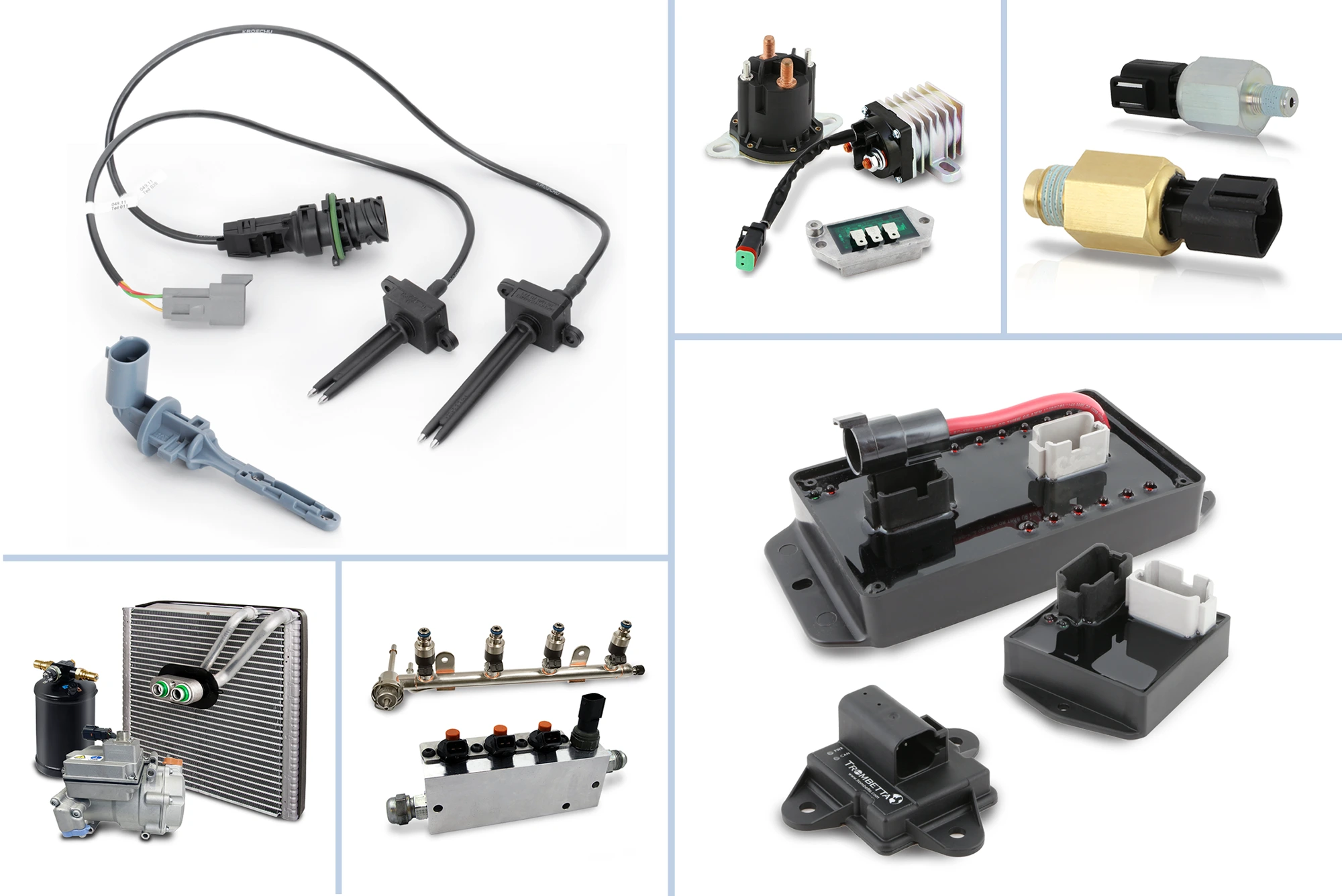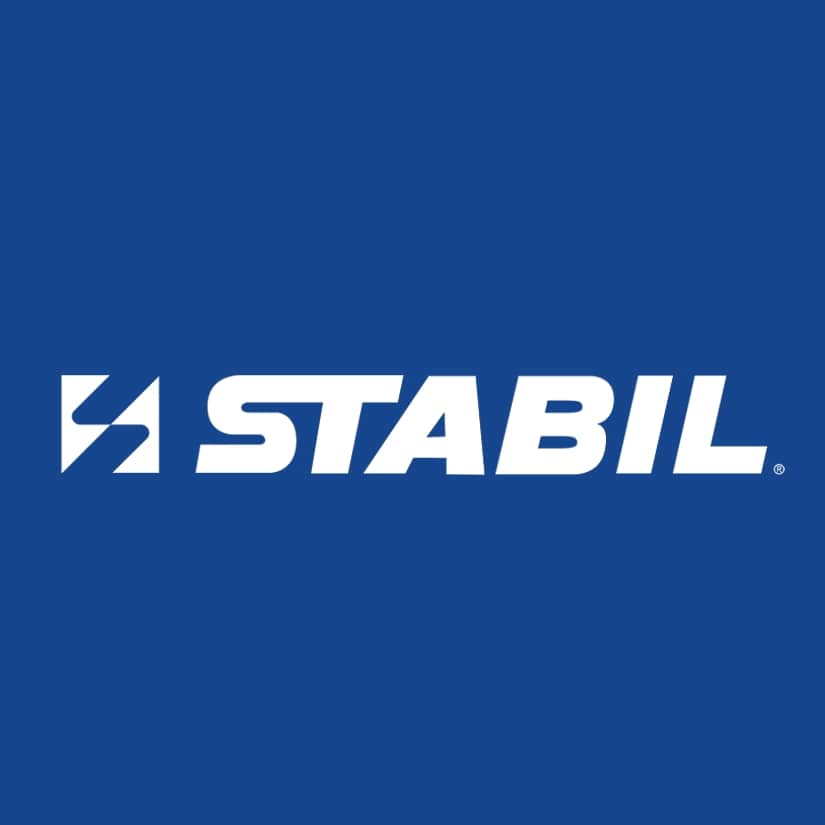January 12, 2024 / Training
A Closer Look: Gasoline Direct Injection (GDI)
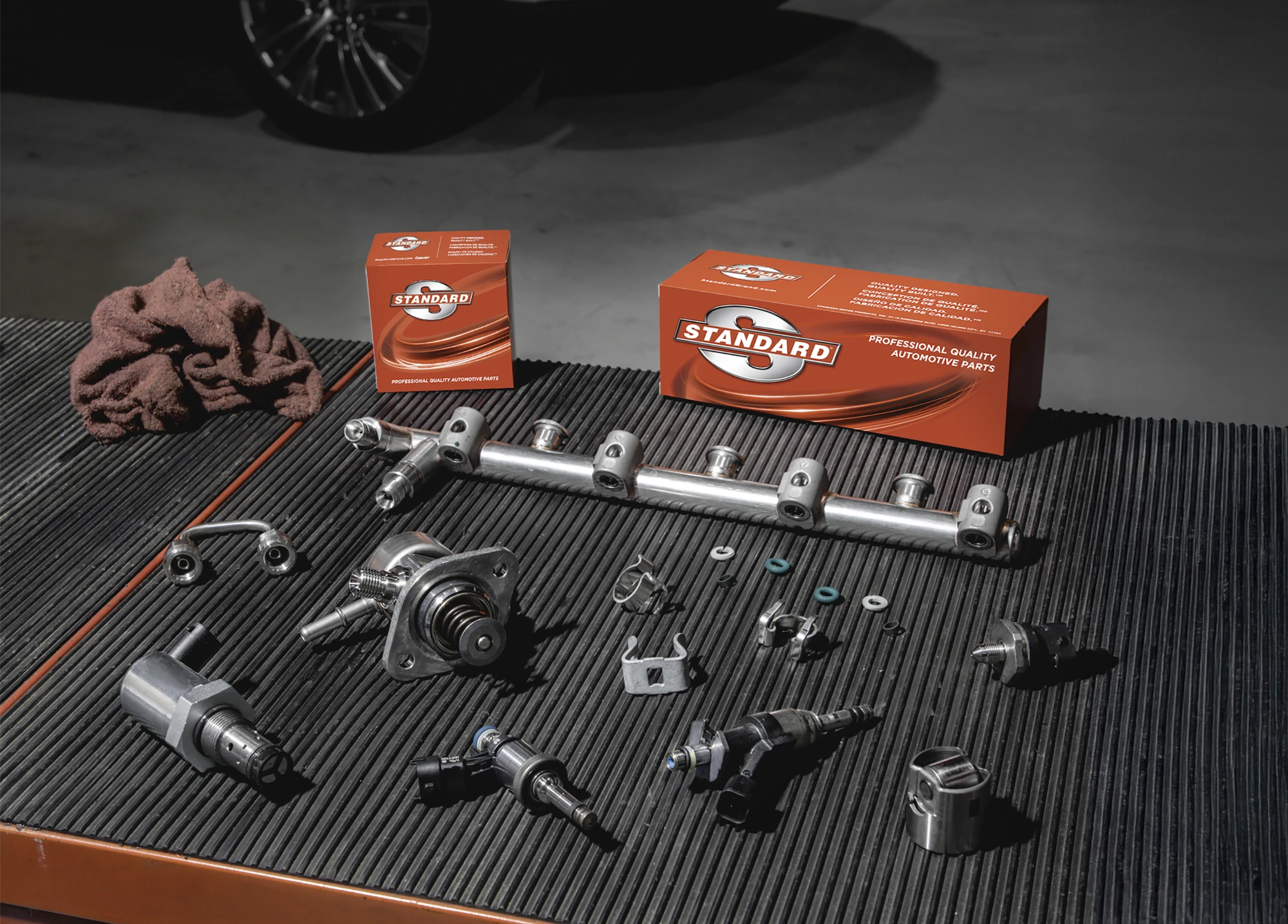
Gasoline direct injection (GDI) is used on most new vehicles and requires a different approach to diagnosis and service. GDI technology has been an integral part of helping to improve fuel economy while reducing emissions and can be found in more than half of the U.S. fleet. In fact, the use of GDI engines has grown by over 600% since 2010. This means that in the next five years, 42 million more vehicles with GDI will enter the Aftermarket “Sweet Spot” of 6-12 years old, during which their injectors and related parts may need to be serviced or replaced. While GDI systems have proved effective, these systems encounter specific failures and require an understanding of how they work and how to test them when they set a code.
Why GDI?
In order to meet tighter emission and CAFE (corporate average fuel economy) standards, manufacturers began introducing GDI engines in the early 2000s. The fuel injectors on a GDI engine inject fuel directly into the combustion chamber primarily on the intake stroke and, in some cases, on the compression stroke as well. As engine speed increases, the amount of time available to inject fuel decreases. Fuel pressure is increased to help increase fuel delivery in a shorter amount of time, producing more power. Fuel rail pressure typically ranges from 300 PSI at idle to 2200 PSI at full load.
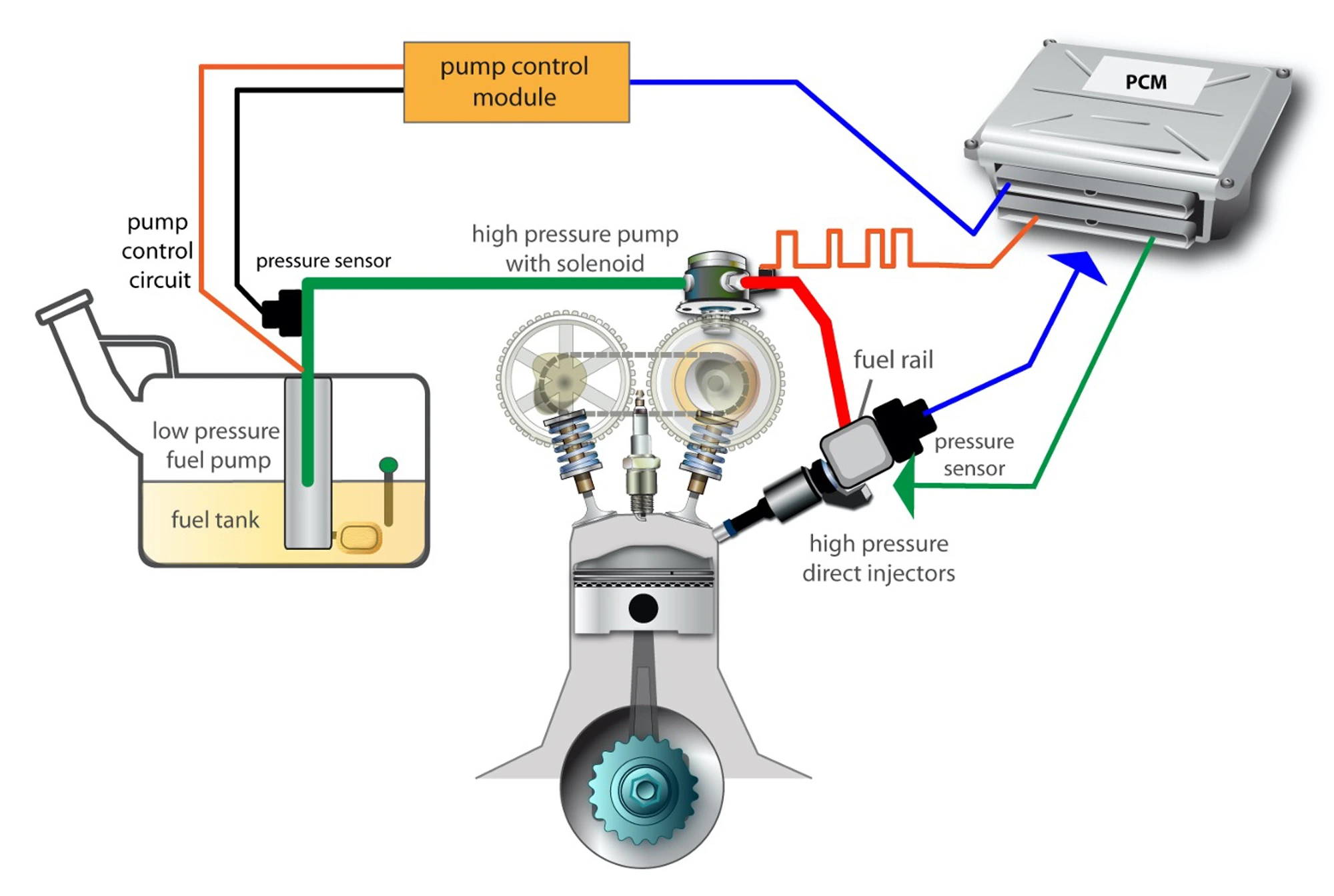
Above is a typical GDI fuel system layout. A low-pressure fuel pump is located in the fuel tank. The low-pressure pump supplies a camshaft-driven mechanical high-pressure pump with 50-80 PSI of fuel. The mechanical pump then generates the high pressures needed and delivers the high-pressure fuel to the fuel rail. The amount of pressure generated in the fuel rail is determined by an ECM-controlled fuel volume solenoid, which is typically part of the mechanical pump.
Tech Tip: When removing the high-pressure fuel pump for any reason, check the follower for wear. If the follower is pitted or chewed up, the camshaft will likely need to be replaced.
The amount of fuel pressure that the pump generates in the fuel rail is dependent on how much low-pressure fuel is allowed to flow into the high-pressure pump. The flow into the pump is controlled by the PCM-controlled integral fuel regulator. In order to deliver high-pressure fuel to the fuel rail, the regulator valve must be timed to the camshaft lobes. This is accomplished by monitoring camshaft position sensor input from the camshaft that drives the high-pressure pump. If there is a problem with the pump, it is important that the technician replace the follower and lines at the same time, and inspect the camshaft.
Tech Tip: Many GDI pumps are known to leak gasoline into the engine when they fail. This can cause fuel trim issues (due to excess fuel getting into the PCV system) or engine failure due to dilution of the oil. Always inspect the oil and change it after a pump failure.
Servicing GDI
Prior to servicing components on a GDI fuel system, it is crucial that there is no pressure in the fuel system. Some vehicles can be depressurized using a scan tool command to the ECM, while others will require the removal of the low-pressure pump fuse or relay. The vehicle should then be started and idled until it runs out of fuel and dies.
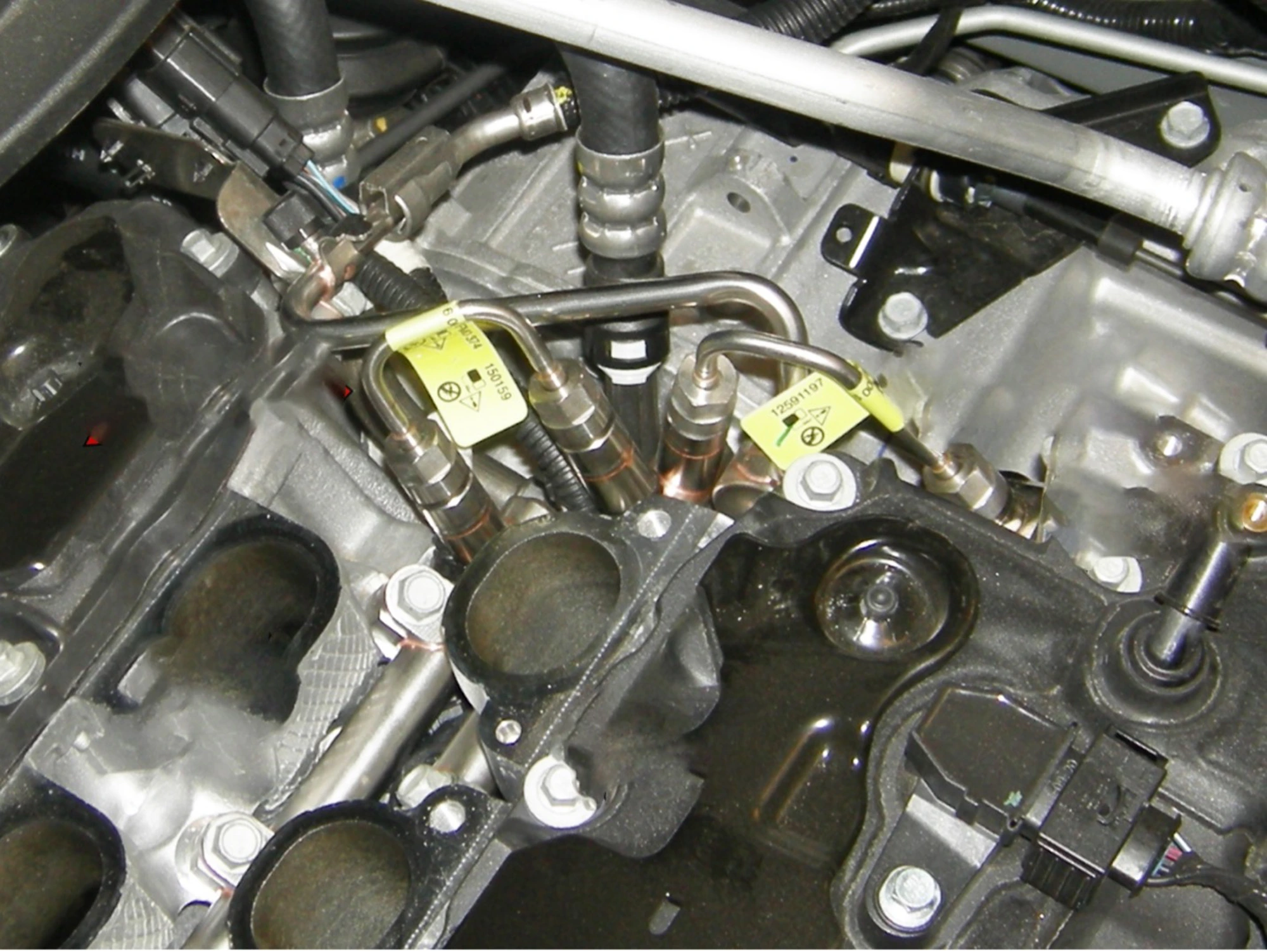
Before disassembling a GDI fuel system for service, it is important to read service information. Most high-pressure fuel lines are a one-time-use component. When they are torqued down, they will distort to fit, ensuring a tight seal. In the above example, you’ll see a GM 3.6L V6 with the intake manifold removed. Note the yellow tags on the high-pressure lines indicating that they must not be reused. Other manufacturers may not use labels, instead recommending within the service information to discard these lines after removal. Reusing these lines can result in a high-pressure fuel leak which could cause a catastrophic fire.
The service information will also help to identify all of the tools necessary to complete the task of replacing the fuel injectors. Once components such as the intake manifold have been removed in order to access the fuel rail, it is important to note that there are two basic types of injector-to-fuel-rail connections.
Tech Tip: Extreme caution should be used when removing the fuel rail. The rail and injectors can be damaged by attempting to pry the rail out incorrectly. Equal pressure should be applied to all areas of the rail at the same time. Videos explaining how to do this properly can be found on our StandardBrand YouTube channel.
On some applications, the fuel injectors are clipped onto the fuel rail. When removing one of these fuel rails, the rail and all of the injectors will come off the engine in one piece.
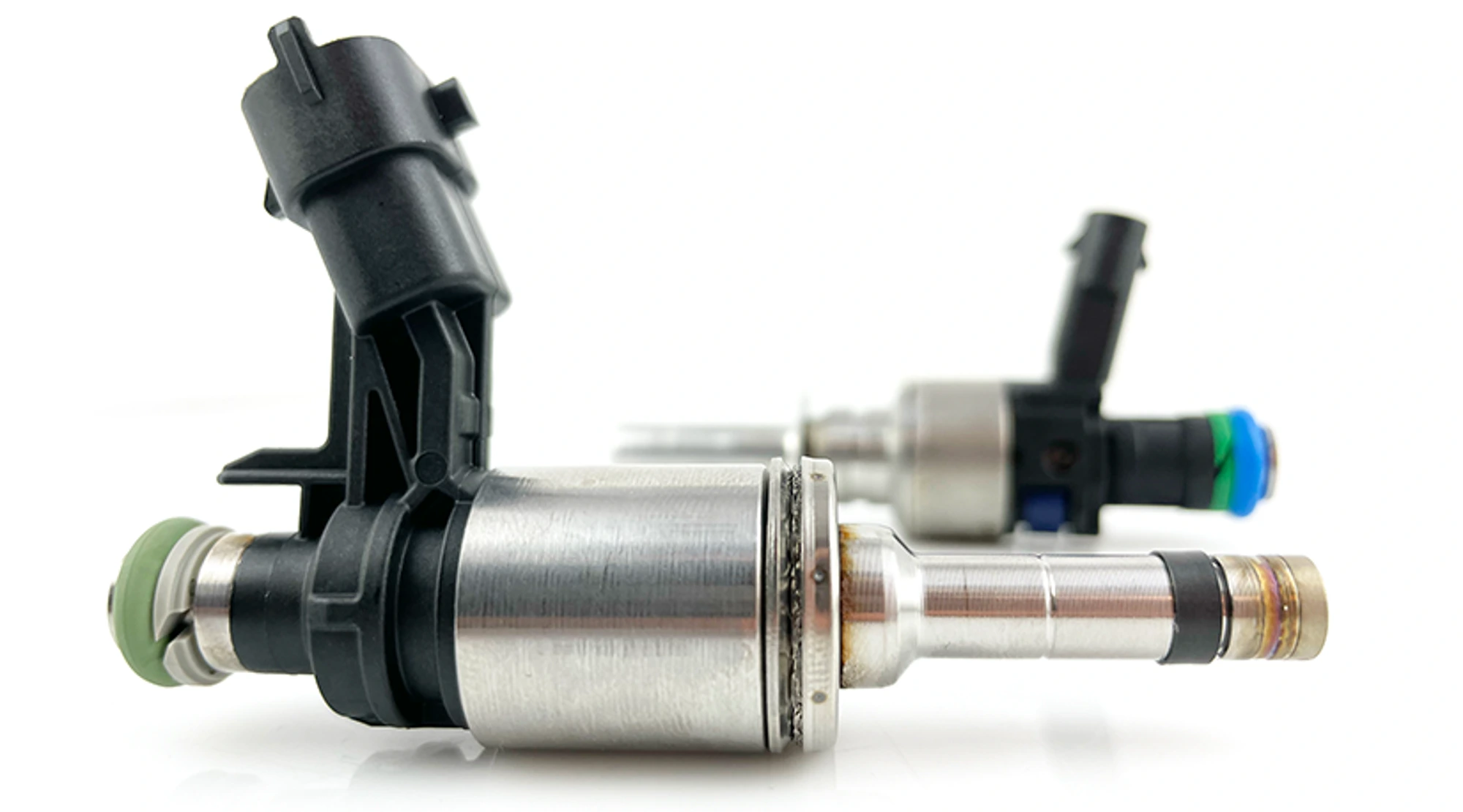
Standard® GDI Injectors are precision-engineered and rigorously tested to ensure optimal performance.
On applications that do not use a retaining clip, you may find that some of the fuel injectors remain in the cylinder head while the rest come out attached to the fuel rail. With the fuel injectors removed, be sure to clean the ports in the cylinder head with a correctly sized wire brush and replace the seals on any fuel injectors that are to be reused. Complete the installation by using the appropriate torque specification and tightening procedure.
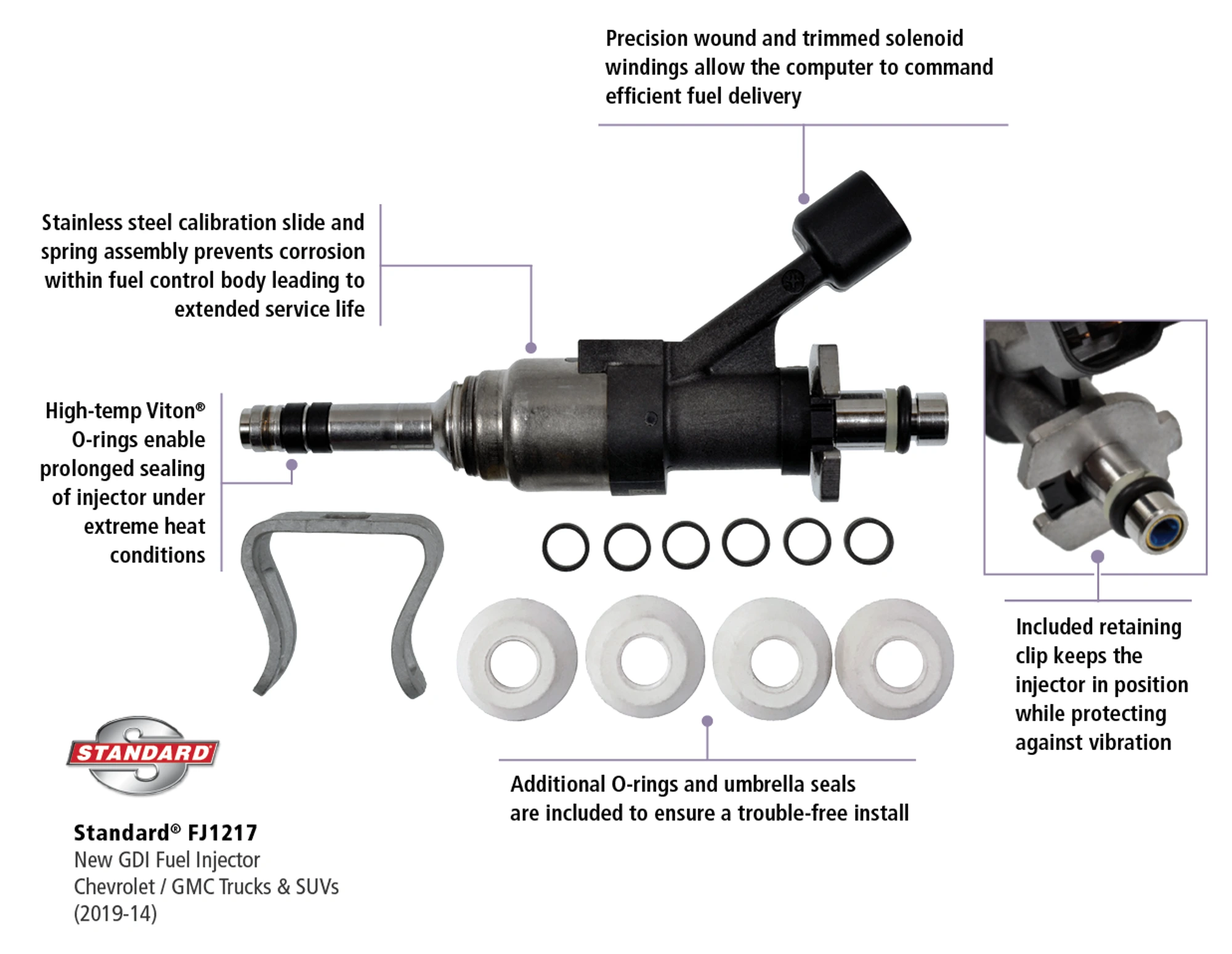
Standard® GDI Injectors are always new, not remanufactured.
The aftermarket-leading Standard® GDI Program is anchored by Injectors, and also includes High-Pressure Fuel Pumps, Fuel Injector Rail Kits, Fuel Pressure Sensors, Fuel Feed Lines, Fuel Pressure Regulators, and Fuel Pressure Sensor Connectors, and new High-Pressure Fuel Pump Kits for a complete line of GDI components.
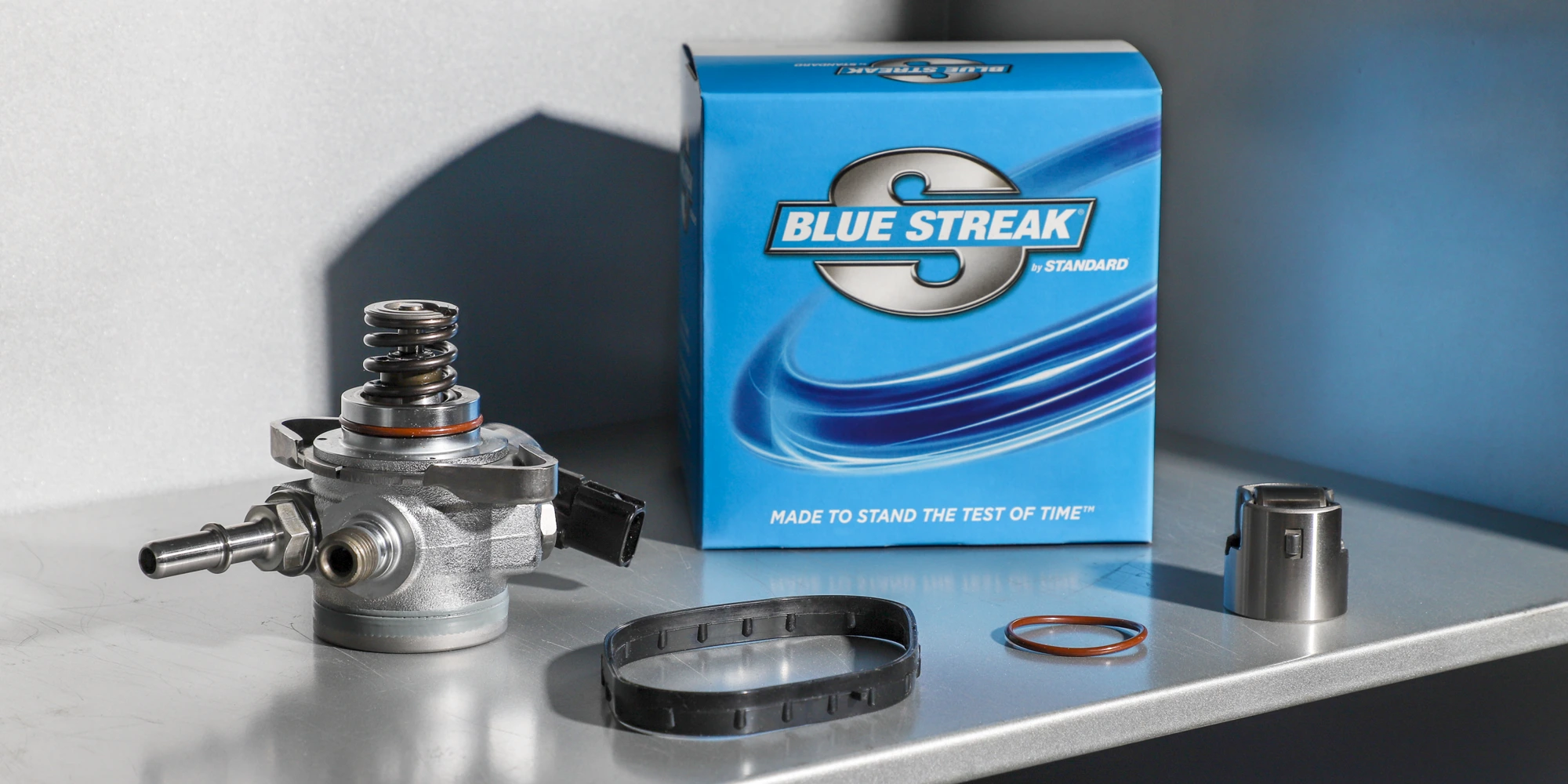
Blue Streak® Direct Injection High-Pressure Fuel Pump Kit (GDP204K) for 2019-11 Ford and Lincoln SUVs, trucks, and vans. VIO: 1.5 million
In 2023, Standard® Blue Streak® launched its new line of Direct Injection High-Pressure Fuel Pump Kits. These new Kits simplify fuel pump replacements by including everything needed for a complete repair: a high-pressure fuel pump, camshaft follower, O-ring, and any additional components needed based on the individual manufacturers’ repair procedures. Providing these components in a complete kit saves technicians’ time and ensures that the job is done correctly the first time with all-new parts—no chasing the correct parts or replacing remanufactured parts that arrive defective.
Standard’s GDI line-up includes hundreds of part numbers for domestic and import vehicles, including applications through 2023, providing industry-leading late-model coverage. To learn more, visit www.StandardGDI.com.
For tips on replacing GDI components, search “GDI” on the StandardBrand YouTube channel.
March 01, 2024 / Training
Why Pentastar Oil Filter Housings Fail
In service since 2011, the Chrysler Pentastar 3.6L engine has powered more than 10 million of the most popular vehicles on the road. These Pentastar engines are equipped with oil filter housings, which contain the oil filter, sensors, and a heat exchanger to help cool the oil. The oil filter housings on the Pentastar V6 engine have become known for their high failure rates. These failures have mistakenly been attributed the idea that the housings can warp due to heat, but this has been proven false. So, why do these units typically leak?
August 15, 2022 / Training
Variable Valve Timing (VVT) Repair Tips
Variable Valve Timing (VVT) or Variable Cam Timing (VCT) is common on most newer engines. These systems are designed to reduce emissions and maximize engine performance and fuel economy. Here's some background on VVT and a few tips for dealing with issues that come up.
August 22, 2022 / Training
Variable Valve Timing (VVT) Operation
Variable Valve Timing (VVT) systems help reduce emissions and maximize engine performance and fuel economy. The VVT Solenoid (Oil Control Valve) meters the oil flow to control the actuation of the VVT Sprocket (Actuator or Phaser). The VVT Sprocket mechanically shifts the position of the camshaft. Here are a few tips for testing.
August 08, 2022 / Training
Turbocharger Diagnosis Tips
Turbocharged engines are becoming more popular, as vehicle manufacturers look to increase fuel efficiency, maintain performance and reduce emissions. Symptoms of a malfunctioning turbocharger include loss of power, excess smoke, high fuel consumption, overheating, high exhaust temperature and oil leaks from the turbo. Here are a few important diagnostic and repair tips to keep in mind.
August 12, 2022 / Training
Tire Pressure Monitoring System (TPMS) Repair Tips
The Tire Pressure Monitoring System (TPMS) is a safety device that measures, identifies and warns you when one or more of your tires is significantly under-inflated. Standard® and Intermotor® are committed to helping technicians with TPMS repairs, whether it’s offering OE-Match TPMS sensors or providing repair tips from our team of ASE-certified master technicians. Here are a few TPMS repair tips.
August 05, 2022 / Training
Mass Air Flow (MAF) Sensor FAQs
The Mass Air Flow (MAF) sensor is a key component of the engine’s fueling strategy. It is crucial that the MAF sensor reports with 100% accuracy to ensure peak performance, fuel economy and reduced emissions. Here are some helpful tips such as how and when to replace them and steps to extend their longevity.
August 19, 2022 / Training
Ignition Coil Operation
Coil-on-plug assemblies are designed to convert a low voltage (primary side) to a high voltage (secondary side) to fire the spark plugs. They perform the functions of both the ignition coil, which creates the spark energy, and the spark plug wire set, which delivers the high-voltage energy to the spark plug. Today's coil-on-plug assemblies come in a variety of physical and wiring configurations.
August 01, 2022 / Training
Diesel Engine Repair Tips
Diesel Engines have become more popular thanks to a steady string of advancements. New engine designs, noise and vibration-damping technologies, and improvements like electronic engine control have spawned a new generation of engines that are more powerful and fuel efficient than similar-size gasoline engines. Learn more about today's diesel engines with these repair tips from our team of ASE-certified master technicians.
January 01, 2023 / Training
A Closer Look: Variable Valve Timing
In an effort to increase fuel efficiency and elevate performance across today’s vehicles, nearly every manufacturer has equipped new vehicles with Variable Valve Timing (VVT) technology, also known as Variable Cam Timing (VCT).
January 05, 2024 / Training
A Closer Look: Turbochargers
Turbocharger Opportunities: In an effort to increase fuel efficiency, maintain performance, and reduce emissions, vehicle manufacturers are adding turbocharged engines to their lineups at a significant rate. Over the next five years, the turbo service market will continue to experience substantial growth.
September 19, 2022 / Training
A Closer Look: Turbocharger Operation and Installation
Turbochargers consist of just three major internal components: the turbine, the compressor and the bearing system that supports the turbine shaft. In an effort to increase fuel efficiency, maintain performance and reduce emissions, vehicle manufacturers are adding turbocharged engines to their lineups at a significant rate.
September 16, 2022 / Training
A Closer Look: Tire Pressure Monitoring Systems (TPMS) Operation
The Tire Pressure Monitoring Systems (TPMS) is a valid safety device that has been mandated for years. TPMS introduced a lot of new terminology – initiate, program, activate, clone, protocol and relearn. This safety system, a prime service opportunity, warns drivers of issues with their tires and protects motorists from potential danger.
January 26, 2024 / Training
A Closer Look: Emissions
The Check Engine Light (CEL) is arguably one of the most effective yet underappreciated advancements in reducing vehicle emissions. Following the introduction of On-Board Diagnostics II (OBD II), the CEL is illuminated continuously if an on-board system monitor has failed a specified number of times and is negatively affecting emissions. If a catalyst-damaging event, such as a misfire, occurs, the CEL will flash. In today’s world of electric vehicles, hybrids, and partial zero-emission vehicles, many people forget that simply keeping their internal combustion engine (ICE)-powered vehicle operating as designed will help in reducing emissions.
September 12, 2022 / Training
A Closer Look: Electronic Throttle Bodies and Control Systems
Electronic Throttle Control (ETC) systems are responsible for improving fuel economy, reducing emissions, protecting powertrain components and providing an overall better driving experience. Most vehicles on the road today use ETC. It is important for technicians to understand the principles of the system before delving into system specifics.
January 29, 2024 / Training
A Closer Look: Electronic Throttle Bodies
A shop’s reputation is affected by things like accuracy of diagnosis, quality of the repair, and friendly service. Equally as important is the quality of the parts installed. If the shop does everything right, and the part fails, the customer will ultimately be upset with the shop. When a new part fails, the customer is inconvenienced again, and begins to lose faith with the shop that performed the work. This ultimately begs the question–why take a chance with inferior parts?
September 09, 2022 / Training
A Closer Look: Blower Motor Resistor Operation
Blower Motor Resistors (BMR) control the electrical current flowing from the fan switch to the blower fan, which allows the motorist to set the fan at different speeds. The fan speed can be changed by switching the blower resistor resistance mechanically, using a rotating lever, or electronically, by the air conditioning system.
September 05, 2022 / Training
A Closer Look: Anti-Lock Braking (ABS) System Operation
The Anti-Lock Braking System (ABS) is concerned with monitoring and controlling wheel slip, which helps maintain vehicle control. The major components of every ABS system are: wheel speed sensors, brake switch, brake master cylinder, EBCM and hydraulic assembly containing the pump motor, accumulator, valves and solenoids.
January 19, 2024 / Training
A Closer Look: Advanced Driver Assist Systems (ADAS)
Advanced Driver Assist Systems have created quite a buzz over the last several years. New business opportunities continuously arise, including a new segment of mobile technicians focusing on ADAS calibrations. While ADAS may still seem relatively new, automotive service professionals have actually been servicing Driver Assist Systems for decades. Systems like power steering, power brakes, and cruise control have been assisting motorists for many years. What is different with ADAS is that there are now input devices to understand what the driver’s intent is and alert the driver to potential dangers, rather than relying solely on the driver’s sight and sound.
January 22, 2024 / Training
A Closer Look: ABS Sensors
Anti-lock Braking Systems are intended to do exactly as the name portrays – prevent a vehicle’s wheels from locking up during a braking event. If any of the wheels lock up, the driver has less control of the vehicle and is more prone to an accident. By releasing some brake pressure to the locked-up wheel, the stopping distance will be increased, but the driver will be able to maintain control to hopefully avoid a collision. Prior to ABS, drivers were taught to pump the brake pedal when attempting to stop suddenly, or when stopping on gravel, ice, or loose pavement. Now, the ABS system does that for them.
